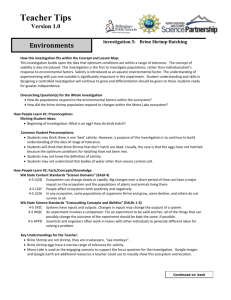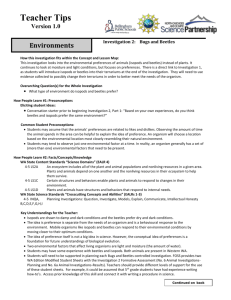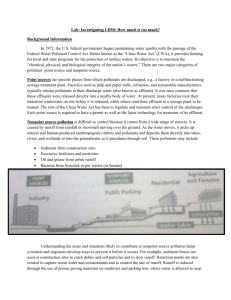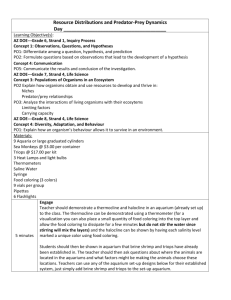Grade 5 Environments Lesson Overviews
advertisement
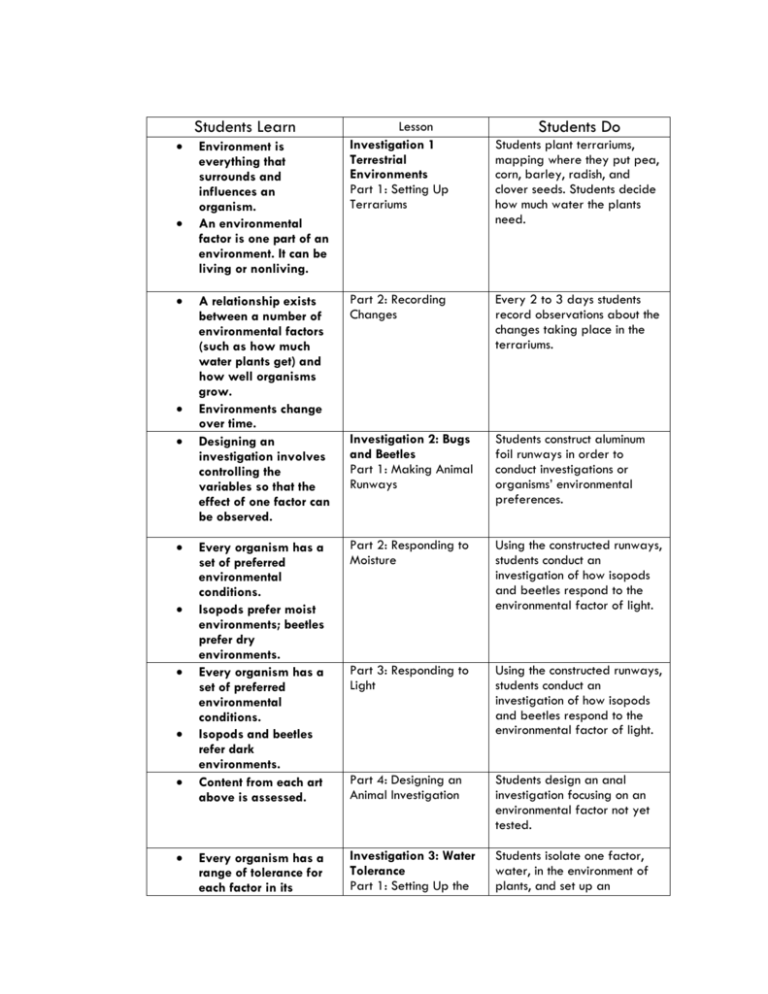
Students Learn Environment is everything that surrounds and influences an organism. An environmental factor is one part of an environment. It can be living or nonliving. Lesson Investigation 1 Terrestrial Environments Part 1: Setting Up Terrariums Students Do Students plant terrariums, mapping where they put pea, corn, barley, radish, and clover seeds. Students decide how much water the plants need. A relationship exists between a number of environmental factors (such as how much water plants get) and how well organisms grow. Environments change over time. Designing an investigation involves controlling the variables so that the effect of one factor can be observed. Part 2: Recording Changes Every 2 to 3 days students record observations about the changes taking place in the terrariums. Investigation 2: Bugs and Beetles Part 1: Making Animal Runways Students construct aluminum foil runways in order to conduct investigations or organisms’ environmental preferences. Every organism has a set of preferred environmental conditions. Isopods prefer moist environments; beetles prefer dry environments. Every organism has a set of preferred environmental conditions. Isopods and beetles refer dark environments. Content from each art above is assessed. Part 2: Responding to Moisture Using the constructed runways, students conduct an investigation of how isopods and beetles respond to the environmental factor of light. Part 3: Responding to Light Using the constructed runways, students conduct an investigation of how isopods and beetles respond to the environmental factor of light. Part 4: Designing an Animal Investigation Students design an anal investigation focusing on an environmental factor not yet tested. Every organism has a range of tolerance for each factor in its Investigation 3: Water Tolerance Part 1: Setting Up the Students isolate one factor, water, in the environment of plants, and set up an environment. Experiment Organisms have specific requirements for successful growth, development, and reproduction. Optimum conditions are those most favorable to an organism. Part 2: Observing the Plants at 5 and 8 Days Aquatic environments include living and nonliving factors. Water and temperature are two nonliving environmental factors to consider when setting up a goldfish aquarium. Carbon dioxide produced by aquatic organisms changes the acidity of the water. Investigation 4 Part 1: Goldfish Aquariums An aquatic environment can contain many different organisms. Organisms of different kinds living together form a community. The chain of feeding relationships between a series of organisms is called a food chain. Brine shrimp are crustaceans that live in marine or salt-pond environments. An environmental factor is one part of an environment. It can be living or nonliving. Organisms have ranges of tolerance for Part 3: New Organisms Part 3: Observing Plants at 11 or More Days Part 2: Acid in Water Investigation 5: Brine Shrimp Hatching Part 1: Setting up the Experiment experiment to determine the range of water tolerance for the early growth of four different plants. Students make observations after 5 and 8 days of growth. Using the Plant Profile Sheet, students disassemble their planters and compare the growth of each plant in the different environments. Students use freshwater aquariums and observe them over a period of time. In this part they observe goldfish and monitor the environmental factors of water and temperature. Students use bromothymol blue indicator to compare the acidity of the water in the goldfish aquarium to a class aquarium containing only plants. Students relate the acid in the water to carbon dioxide produced by the fish. Students create a more diverse aquarium by introducing pond snails and plants into the goldfish aquarium. Students investigate the environmental factor of salinity in hatching brine shrimp eggs. They conduct a controlled experiment to determine which of four salt concentrations allow brine shrimp eggs to hatch. environmental factors. Within a range of tolerance, there are optimum conditions that produce maximum growth. Brine shrimp eggs can hatch in a range of salt concentrations, but more hatch in environments with optimum salt concentration. By altering the environment to optimum salt concentration, brine shrimp eggs that were once dormant can hatch. Organisms have ranges of tolerance for environmental factors. In a controlled experiment, one variable is manipulated while all others are held constant. Plants have different tolerances for salt. Apply environmental concepts. Part 2: Determining Range of Tolerance Students monitor saltwater environments. They determine which environments are conducive to hatching brine shrimp. Part 3: Determining Viability Students are challenged to manipulate the environment to see if they can get the dormant eggs to hatch and grow. Investigation 6: Salt of the Earth Part 1: Setting Up the Environment Students select a topic from their study of environments to investigate in greater depth. The results of their project are shared with the rest of the class in a formal presentation. Part 2: Observing Plants Students monitor growth of their plants at 5, 9, and 13 days after planting. They determine the salt tolerance of the four plants. Students select a topic from their study of environments to investigate in greater depth. The results of their project are shared with the rest of the class in a formal presentation. Part 3: Choosing Your Own Investigation


